Over 20 years manufacturing experience of Road marking machine and road marking removal machine.
sales@lxdmarking.com+86 15805293662
The Future of Hand Push Thermoplastic Road Marking Machines: Innovations and Trends
In recent years, road marking technology has undergone a transformative evolution, with hand push thermoplastic road marking machines leading the charge. These machines, once considered simple tools for marking roads, are now sophisticated pieces of machinery that combine functionality with innovation. As urbanization and the need for safer roads grow, these machines have become essential in maintaining road surfaces and ensuring traffic safety. The future of hand push thermoplastic road marking machines is poised for exciting advancements, blending technology, sustainability, and operator comfort.
The Current Landscape: A Quick Overview
Hand push thermoplastic road marking machines are designed to apply thermoplastic polymers, creating durable and visible markings. These machines typically feature a hand push mechanism, a heated gun, and a marker pen. The current landscape is marked by machines that offer precision, ease of use, and long-lasting markings. Key features include multi-color marking capabilities, automatic temperature control, and built-in maps for precise application. Case studies show these machines are widely used in urban areas, parking lots, and industrial sites, where visibility and durability are paramount.

Technological Innovations: Enhancing Performance
The future promises significant technological advancements in hand push thermoplastic road marking machines. Smart temperature control systems are now being integrated, ensuring consistent polymer application and reducing waste. Automatic calibration systems minimize operator intervention, improving efficiency. Additionally, AI-driven systems analyze road conditions in real-time, adjusting markings to enhance safety. These innovations not only boost performance but also reduce operator errors, making these machines more reliable and efficient.
Sustainable Practices: Eco-Friendly Innovations in Hand Push Thermoplastic Marking
As environmental concerns grow, so does the demand for eco-friendly road marking machines. Hand push thermoplastic machines are being designed with sustainable materials, reducing energy consumption and waste. Many models now feature energy-efficient heating elements and low-volatile solvent-based polymers. Educational campaigns are also underway to raise awareness about the environmental impact of road markings, encouraging the adoption of sustainable practices. These efforts underscore a shift towards greener technologies, ensuring the industry remains responsible.
Predictive Developments
The future of these machines is expected to be shaped by predictive technologies. AI-driven systems will likely predict road maintenance needs, optimizing maintenance schedules. Additive manufacturing could revolutionize part production, making machines more durable and customizable. Additionally, compact, modular designs may emerge, catering to diverse applications and reducing infrastructure costs. These trends indicate a move towards smarter, more adaptable machinery, enhancing both efficiency and sustainability. For example, predictive maintenance can reduce downtime and extend the lifespan of the machines, leading to significant cost savings over time. Machine learning algorithms can further optimize the marking process by adapting to different road conditions and traffic patterns.
Comparative Analysis: Strengths of Hand Push Thermoplastic Machines
When compared to other marking methods, such as spray paint or water-based systems, hand push thermoplastic machines stand out. Their thermoplastic polymers create markings that blend seamlessly with road surfaces, offering superior durability. Spray paint markings are temporary, requiring frequent touch-ups, while water-based markings may fade over time. Hand push thermoplastic machines provide a long-lasting, high-visibility solution, making them ideal for permanent road markings.
User Experience: Enhancing Comfort and Efficiency
Operator comfort and efficiency are critical aspects of these machines. Ergonomic designs, intuitive controls, and automatic features streamline the marking process. Operator feedback highlights the reduction in back strain and increased productivity, underscoring the machines' user-friendly design. Features like touchscreens and real-time monitoring systems further enhance the operator experience, making these machines accessible to a broader range of users.
User Experience: Real-World Examples
A recent case study in a major city highlighted the benefits of these machines. The city had previously used spray paint for road markings but found that the thermoplastic markings required fewer touch-ups and were more durable. The operators also reported feeling less strain from the task and increased productivity. The city now plans to adopt these machines across its entire network, reducing maintenance costs and improving road safety.
Economic Impact: Cost Savings and Revenue Generation
The adoption of these machines can lead to significant cost savings. By reducing maintenance and labor costs, cities and private organizations can allocate funds to other critical infrastructure projects. Additionally, the durability of thermoplastic markings can generate revenue by reducing the need for frequent repainting and improving the overall aesthetic appeal of roads. For instance, a study in Europe found that cities using thermoplastic markings saved an average of 30% on maintenance costs compared to those using traditional methods.
The Road Ahead
The future of hand push thermoplastic road marking machines is brimming with potential. Advances in technology, sustainability, and user experience will drive these machines into new realms, ensuring their relevance in an ever-changing world. As road marking technology evolves, it will continue to play a vital role in maintaining road safety and infrastructure. By embracing innovation and sustainability, these machines will remain a cornerstone of modern transportation systems. The combination of technical advancements and user-friendly features will make these machines indispensable tools for urban planners, maintenance crews, and city administrators alike.

